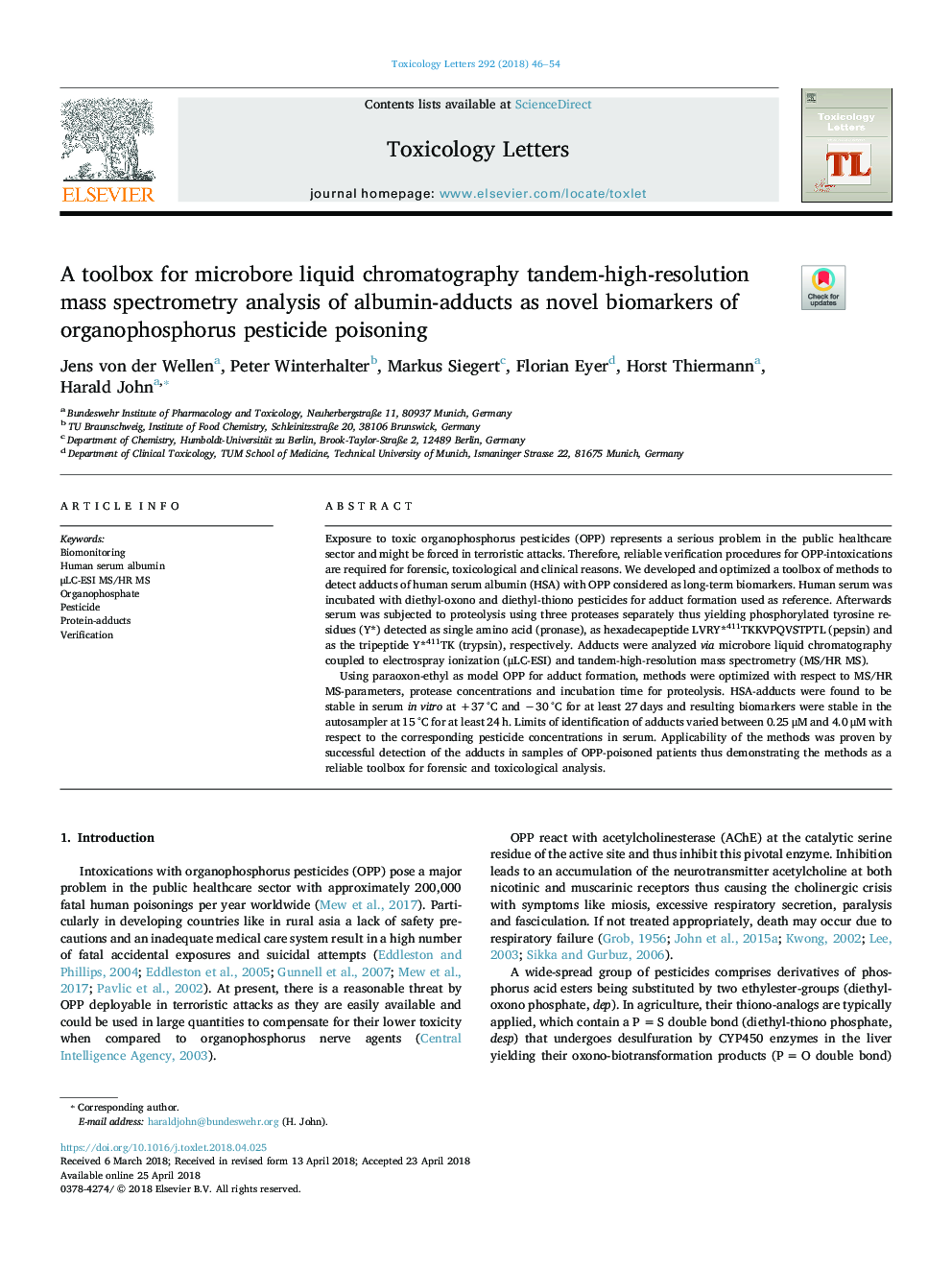| Article ID | Journal | Published Year | Pages | File Type |
|---|---|---|---|---|
| 8553187 | Toxicology Letters | 2018 | 9 Pages |
Abstract
Using paraoxon-ethyl as model OPP for adduct formation, methods were optimized with respect to MS/HR MS-parameters, protease concentrations and incubation time for proteolysis. HSA-adducts were found to be stable in serum in vitro at +37â¯Â°C and â30â¯Â°C for at least 27â¯days and resulting biomarkers were stable in the autosampler at 15â¯Â°C for at least 24â¯h. Limits of identification of adducts varied between 0.25â¯Î¼M and 4.0â¯Î¼M with respect to the corresponding pesticide concentrations in serum. Applicability of the methods was proven by successful detection of the adducts in samples of OPP-poisoned patients thus demonstrating the methods as a reliable toolbox for forensic and toxicological analysis.
Related Topics
Life Sciences
Environmental Science
Health, Toxicology and Mutagenesis
Authors
Jens von der Wellen, Peter Winterhalter, Markus Siegert, Florian Eyer, Horst Thiermann, Harald John,
